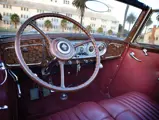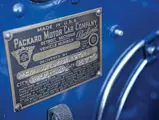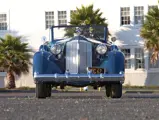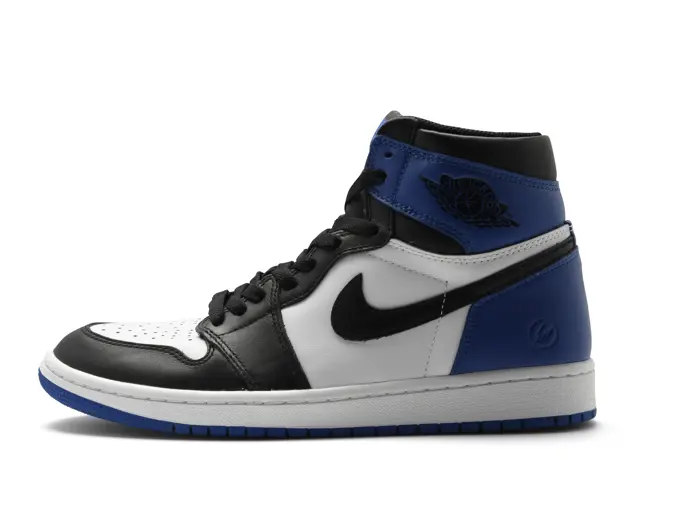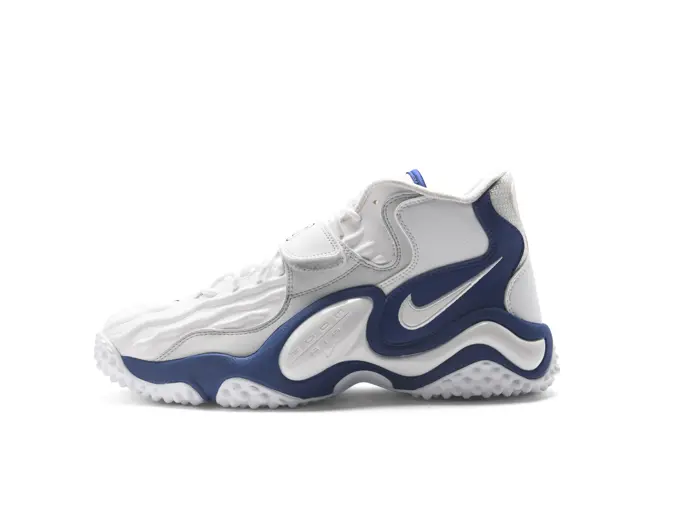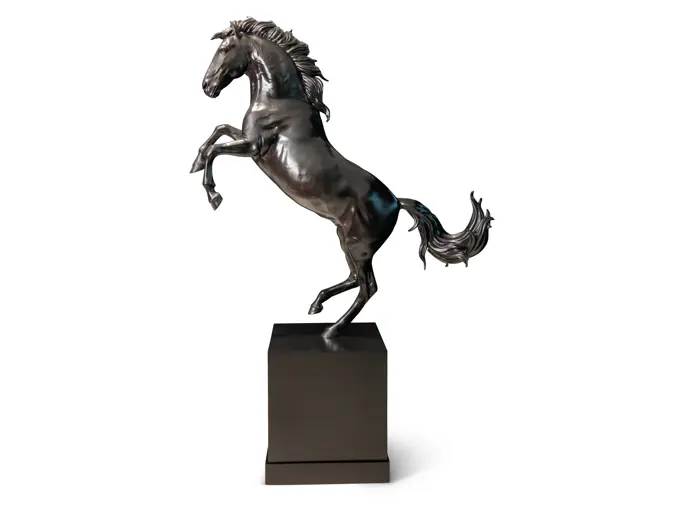St. John's 2013
1935 Packard Twelve Coupe Roadster
{{lr.item.text}}
$187,000 USD | Sold
 | Plymouth, Michigan
| Plymouth, Michigan
{{internetCurrentBid}}
{{internetTimeLeft}}

- Powerful and prestigious Packard V-12
- Attractive older restoration
- One of the last Dietrich-built Packard bodies
Model 1207. 175 bhp, 473.3 cu. in. L-head V-12 engine, three-speed manual transmission, front and rear semi-elliptic leaf spring suspension, and four-wheel power-assisted mechanical drum brakes. Wheelbase: 139.25 in.
For 1933, Packard’s new Twin Six was re-christened simply “Packard Twelve,” and while marketing was ambitious, the results were nearly the same as the introductory year, with 540 cars built. Finally, in 1934, the market improved and sales nearly doubled. All Packards received new, more streamlined bodies in 1935. The Twelve gained aluminum heads and a quarter inch of stroke. Sixteen body styles were catalogued, with five open models built in the shops of coachbuilder Dietrich Inc.
Raymond Dietrich was hired in 1913 as an apprentice draftsman at Brewster & Co. in New York; he was just 19. Brewster sent him to the Andrew F. Johnson Technical School, then the most rigorous education available in the field of coachbuilding. After some time at Chevrolet, he returned to Brewster, met Tom Hibbard, and shortly after, the two of them went out on their own to form LeBaron Inc. In 1925, however, Edsel Ford lured Dietrich to Detroit, where he accepted an invitation to form Dietrich Inc. in partnership with the Murray Corporation of America, a body supplier to much of the Detroit auto industry.
Dietrich did a number of custom designs for Packard dealers, which brought him to the attention of Alvan Macauley, Packard’s president. Macauley went to visit the up-and-coming designer and ended up ordering 175 bodies, beginning a long association that saw a number of Dietrich designs in Packard catalogues. Continuing to work for other clients, Dietrich Inc. became the largest American constructor of non-production bodies and won gold medals at Paris and Monte Carlo. Raymond Dietrich left to work at Chrysler as the bespoke body business began to wane in 1932. Murray, however, continued to produce a number of Dietrich designs for Packard, since he still had the rights to the “Dietrich label.” In 1934, much of Murray production capacity was needed for the new One-Twenty Packard, so senior open bodies were delegated to Dietrich Inc., which was still operating at Holden Avenue in Detroit, north of the Packard Works on East Grand Boulevard.
Delivered new by Packard Florida Motors in Palm Beach on February 5, 1935, this Coupe Roadster spent the 1960s and ’70s in California. The engine was rebuilt by Charles Last in 1973, and the interior has subsequently been replaced. The current owner performed an on-frame restoration in 1998, with paint, chrome, top, and carpet done by local specialists.
Handsome in medium blue with chrome wire wheels and wide whitewall tires, it has a crimson leather interior with matching carpet and is capped off with a tan canvas top. It was honored in the Circle of Champions at the Packard International National Membership Meet at Santa Ana in 2006. In addition to the servo-assisted mechanical brakes, it has adjustable shock absorbers, a radio, and the standard rumble seat with a golf bag door.
In July 1935, Dietrich Inc. wound down; although, the label continued to be used for two years longer on Murray-built bodies. This is one of the last Dietrich-built Packards to be completed, and it is certainly one of the most desirable.




